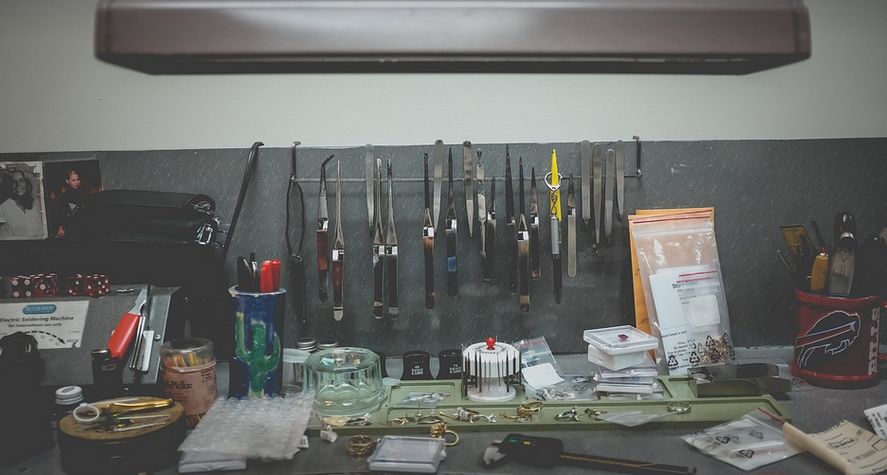
Types Of Steel For Knives: A Deep Dive
Understanding the Basics
You’ve probably heard people talk about “stainless steel,” or maybe you’ve even seen a fancy knife with a colorful blade. But have you ever stopped to think, what exactly goes into those blades? The secret sauce is in the steel. Steel is essentially iron with added carbon and sometimes other elements, which gives it strength and durability. When it comes to knives, different steels offer unique qualities that make them better suited for specific tasks.
From Kitchen Knives to Outdoor Survival: Exploring Steel Types
You might think of stainless steel as the go-to choice for everyday kitchen knives because it’s rust-resistant, but it’s not always the best option. Let’s dive into some common steel types used in knife crafting, exploring their strengths and weaknesses:
1. High Carbon Steel
High carbon steels are known for their edge retention and sharpness but can also be brittle and prone to chipping if mishandled. This type of steel offers a classic feel and sharp performance that many traditional knife makers love. The higher the carbon content, the sharper the blade will be, and the harder it will be to bend or break. However, they require more attention during sharpening compared to other types of steel due to their hardness.
Imagine crafting your own Damascus steel knives, where individual layers of iron and steel are hammered together for a unique blade design! They offer excellent cutting ability and durability, but the craftsmanship requires practice and experience.
High carbon steels are often used in chef’s knives, hunting knives, and some pocket knives.
2. Low Carbon Steel
Low carbon steel is your friend if you value affordability and ease of use. While their blades won’t hold an edge as long as high-carbon steel, they offer a good balance of toughness and sharpness. They are known for being easy to sharpen, even for beginners. These steels are generally used in utility knives, paring knives, and other everyday tasks.
Low carbon steel is like the workhorse of the knife world—reliable but not flashy!
They’re also a great choice for those who want to understand how their knife tools interact with various cutting tasks. These steels are often used in utility knives, paring knives, and other everyday tasks.
3. Austenitic Stainless Steel
This type of steel is the workhorse when it comes to durability. This kind of steel is known for its resistance to corrosion (rust) thanks to added chromium and nickel, making them ideal for everyday kitchenware. They’re also known for their ease of sharpening and a good edge retention. While not known for extreme sharpness like high-carbon steel, Austenitic Stainless steel offers consistent performance and longevity compared to other types.
Stainless steel is like the workhorse of the knife world—reliable but not flashy!
It’s also a popular choice for chefs due to its corrosion resistance. It comes in various grades, offering different levels of hardness, edge retention, and rust resistance.
4. 410 Stainless Steel
While it might sound like a mouthful, 410 stainless steel is a versatile option that’s widely used for its durability and affordability. This type of steel combines the best of both worlds—it offers rust-resistance and good cutting ability thanks to its high carbon content. It’s often used in kitchen knives due to its balance of strength and ease of use.
410 stainless steel is a popular choice for chefs because it’s durable, corrosion-resistant, and affordable.
It also holds an edge well, making it a good option for everyday tasks like chopping and slicing.
5. 5160 Steel
For those in the know, 5160 steel is prized by knife makers for its strength and durability. This type of steel boasts impressive toughness and wear resistance, making it ideal for high-demand cutting tasks, especially with heavy-duty knives like hunting knives. It’s a favorite choice for knife enthusiasts looking for exceptional performance.
5160 steel is known for its incredible strength and durability. It’s often used in blades designed to withstand tough conditions.
You can also find specialty 5160 steel blades if you want a more personalized blade.
Choosing the Right Steel: A Personal Touch
Ultimately, choosing the right steel for your knife depends on your specific needs. Are you looking for a sharp and durable kitchen knife that can handle daily tasks? Or perhaps you’re after a high-performance hunting knife to tackle tough outdoor environments.
Consider these factors when selecting a steel:
- Purpose: What will you be using the knife for?
- Edge Retention: How long do you expect your blade to retain its sharpness?
- Durability: How resistant is the steel to wear and tear from frequent use.
Choosing the right steel is a personal affair, but understanding the basics can help make informed decisions. As you continue exploring different styles of knives, you’ll be able to appreciate the incredible diversity in materials used to craft these essential tools!